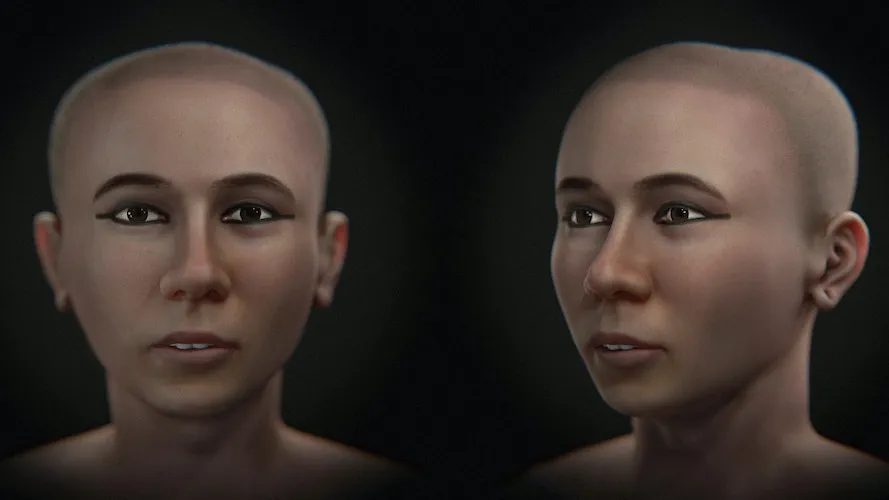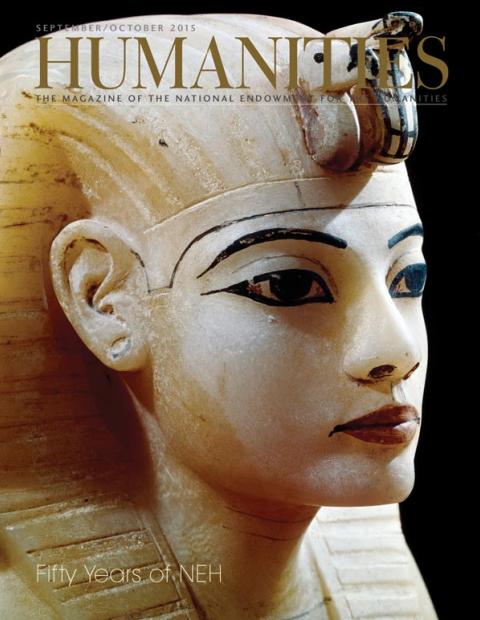Meanderer
Supreme Member
King Tut's likeness revealed in vivid new facial approximation of ancient Egyptian pharaoh
Researchers created a facial approximation that reconstructs what the ancient Egyptian pharaoh Tutankhamun may have looked like.

An artist's depiction of what the ancient Egyptian pharaoh King Tut may have looked like. (Image credit: Cícero Moraes, et al)
"The pharaoh Tutankhamun, also known as King Tut, is arguably the best-known ruler in ancient Egyptian history. And while much has been written about the royal youth, who held the throne from about the age of 9 until his death a decade later around 1323 B.C., his actual appearance is still a matter of debate. "
"But now, a new facial approximation provides a glimpse of what the historical figure may have looked like, revealing new insight into some of the former king's more peculiar facial characteristics."
"Tutankhamun is of archaeological interest not only because of his world-famous burial treasure, but because he ruled for a decade at an important phase in Egyptian history," Michael Habicht, a senior research fellow at Flinders University in Australia and co-author of the new research, told Live Science in an email. Tut's father, the revolutionary pharaoh Akhenaten, had discouraged worship of all gods except Aten, the sun disc. But Tut did not follow his father's ways."
"His reign saw a return to the old gods after his father Akhenaten's new [Aten] cult had failed and plunged the land on the Nile into chaos," Habicht said. "Therefore, a forensic facial reconstruction is helpful to get an idea of the appearance of the young king." (READ MORE)
Researchers created a facial approximation that reconstructs what the ancient Egyptian pharaoh Tutankhamun may have looked like.

An artist's depiction of what the ancient Egyptian pharaoh King Tut may have looked like. (Image credit: Cícero Moraes, et al)
"The pharaoh Tutankhamun, also known as King Tut, is arguably the best-known ruler in ancient Egyptian history. And while much has been written about the royal youth, who held the throne from about the age of 9 until his death a decade later around 1323 B.C., his actual appearance is still a matter of debate. "
"But now, a new facial approximation provides a glimpse of what the historical figure may have looked like, revealing new insight into some of the former king's more peculiar facial characteristics."
"Tutankhamun is of archaeological interest not only because of his world-famous burial treasure, but because he ruled for a decade at an important phase in Egyptian history," Michael Habicht, a senior research fellow at Flinders University in Australia and co-author of the new research, told Live Science in an email. Tut's father, the revolutionary pharaoh Akhenaten, had discouraged worship of all gods except Aten, the sun disc. But Tut did not follow his father's ways."
"His reign saw a return to the old gods after his father Akhenaten's new [Aten] cult had failed and plunged the land on the Nile into chaos," Habicht said. "Therefore, a forensic facial reconstruction is helpful to get an idea of the appearance of the young king." (READ MORE)


















